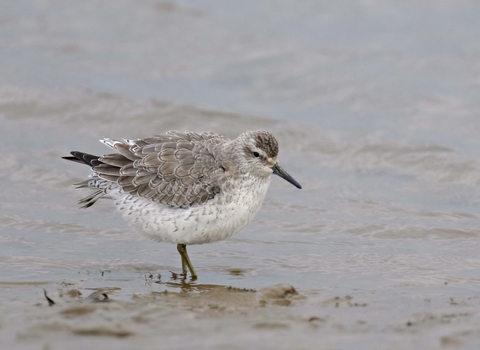
Knot ©Chris Gomersall/2020VISION
Knot
A stocky, little sandpiper, the knot can be spotted in estuaries from August onwards, migrating here from the Arctic where it breeds. Look out for it probing the muddy sand with its specialised bill as it hunts for marine animals to eat.
Scientific name
Calidris canutusWhen to see
August to MaySpecies information
Statistics
Length: 23-25cmWingspan: 59cm
Weight: 140g
Average lifespan: 7 years
Classified in the UK as Amber under the Birds of Conservation Concern 5: the Red List for Birds (2021). Listed as Near Threatened on the global IUCN Red List of Threatened Species.
